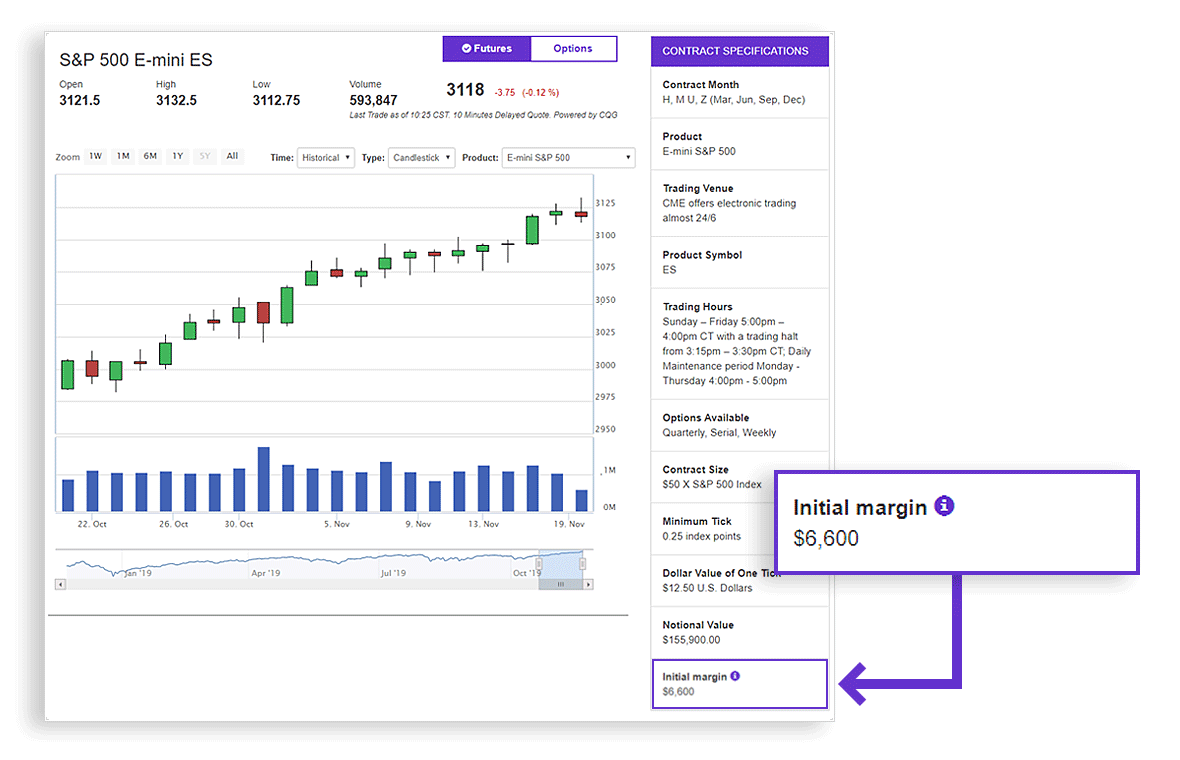
The straddle, a type or option trade, involves buying both a put and call option with the same strike prices. This strategy is popular among investors who anticipate a big shift in the stock market but do not know whether it will go up or down.
Although straddling is not the only method to profit from volatility it is the most profitable. This strategy will help you keep your entire investment intact if the market doesn't move.
When trading a Straddle, it is important to calculate the net option price and the risk of losing. This is the sum of the strike price and the total cost for the options.
If the underlying security's price rises or falls more than the net option premium, you can make a profit on your straddle. This is called a direction bias. Profits are also possible if volatility rises enough to offset decaying times value of your straddle.

Generally, straddles can be most effective when a stock's value is expected to move quickly and significantly. They work best when the stock's price is likely to change dramatically due to an earnings announcement or news event.
The straddle does not suit all investors. It is essential to assess your individual investment goals, risk tolerance, and investment objectives before making any decision. For the best options for you, it is advisable to consult a financial advisor.
Long straddles, while very lucrative when the underlying share price moves in the desired direction they are not profitable. They also come with risk and may lose money if that stock falls. Because it takes a very large price swing to turn a profit in a long-straddle, this is because the stock's value must move strongly.
In the same way, profits are eliminated if the underlying stocks fall too much. The trade price is the maximum loss for a long straddle.
A long straddle also has the advantage that it is direction-neutral. The investor is only concerned with the stock’s movement and not how it moves. A straddle may not be the best option for everyone because it requires advanced forecasting skills.

Strangle is another type of straddle. This involves buying both the call and the put options for the same underlying assets with the same strike. This is a less expensive but riskier option than the long straddle.
The strangle is less costly than the long-straddle. However, there's a higher chance that the underlying security will make a larger jump to be profitable. It also tends to be more difficult to get in and out of, so you must have a good idea of the direction that the underlying stock will take before entering this strategy.
The profitability of a long-straddle can be affected by many factors such as volatility and liquidity. Remember, a long-straddle can be very expensive. You need to be realistic about the costs before you begin this strategy.
FAQ
Which is more difficult, forex or crypto?
Forex and crypto both have unique levels of complexity. Crypto may require a greater level of understanding due to its newness and connection with blockchain technology. Forex is a well-established currency with a stable trading infrastructure.
Forex trading has fewer risks than cryptocurrency trading. Crypto markets move in unpredictable ways and can change quickly. To be successful in crypto trading, you should research the historical trends in the market where it trades to gain an advantage.
Forex traders need to be able to comprehend the dynamics between foreign currency pairs. For example, how prices react to news. A good understanding of technical indicators is essential to identify buy and sell signals. Another important aspect to consider is leverage. Traders are exposed to additional risk when trading currency pairs with high volatility.
Both forex and crypto both require attention, solid research skills and a clear strategy in order to consistently make profitable trades.
How can I invest in Bitcoin?
Although it may seem difficult to invest in Bitcoin, it is not as complicated as you might think. All you need are the right tools and knowledge to get started.
There are many options for investing. You can purchase Bitcoin directly, use an exchange to trade, or use a financial instrument known as a derivatives contract to gain exposure.
You will also have to decide where to store your bitcoin. There are many options such as exchanges, wallets, custodians and cold storage. Depending on your risk appetite and goals, some options might be more suitable than others.
Next, you should research any additional information necessary to feel confident in your investment decisions. Learning the basics of cryptocurrencies and how they work before diving in is important. To stay on top of crypto trends, keep an eye out for market developments and news.
Final, make a plan to invest in Bitcoin. This will be based on your experience level and allow you to set reasonable expectations for return. You'll have a better chance of success over the long-term.
Most Frequently Asked Questions
What are the 4 types of investing?
Investing is a way for you to grow your money and possibly make more long-term. There are four main types of investing: stocks, bonds and mutual funds.
Stocks can be broken down into common stock or preferred stock. A common stock gives an individual ownership right of a company, including voting rights at shareholders' meetings and the potential to earn dividends. While preferred stock does not grant voting rights, it gives owners ownership rights and fixed dividend payments. This provides investors with an income stream that is reliable.
Bonds are loans made by investors to governments and companies in return for interest payments. The bond will expire on its maturity date. While bonds offer more stability and lower risk than stocks, the returns are usually lower than those of stocks.
Mutual funds combine investor money to spread investment risk and diversify investments. They can be used to pool capital across many securities such as bonds, stocks, and commodities. Professional managers manage mutual funds. They use their experience to choose profitable investments based on pre-determined criteria, such as risk level or expected return rate.
Cash equivalents include products such as Treasury bills, money market deposits, certificates of deposit (CDs), and commercial paper which often mature within one year or less during which time they carry minimal risks of default or downturns in their value. This type of investing is best for conservative investors who aren't willing to take high-risk but still want a higher return than depositing money in low-interest bank accounts.
Which forex trading platform or crypto trading platform is the best?
Both crypto and forex trading can make you money, but it really comes down to your investment goals.
Forex trading involves investing in foreign currencies. This is an easy option for beginners. It requires a smaller capital upfront, plus forex markets are global and open 24/7.
But crypto trading is a great alternative because it offers almost instant returns as prices can fluctuate quickly due volatility. Also, crypto trades can be cashed out quickly due to their liquidity.
In both cases it's crucial to do your research before making any investment. Any type of trading can be managed by diversifying your assets.
It is also important to understand the different types of trading strategies available for each type of trading. For example, forex traders may use technical analysis or fundamental analysis to help them make decisions, while crypto traders may use arbitrage or margin trading to maximize their profits. To help manage their investments, traders may use automated trading systems or bots. Before investing, it is important that you understand the risks as well as the rewards.
What is the best trading platform for you?
Many traders find it difficult to choose the right trading platform. It can be overwhelming to pick the right platform for you when there are so many options.
The best trading platform should offer the features you need, like advanced chart analysis tools, real-time market data, and sophisticated order execution capabilities. It should also feature an intuitive, user-friendly interface.
You will need to have access to multiple account types, low fees, reliable customer support, and educational resources. Demo accounts and free trials are a great way to test virtual money before investing any real money.
Think about what kind of trader you are, whether you're active or passive, how frequently you intend to trade, and what asset class you want. This will help you narrow your search for the right trading platform.
Once you have identified the platform that suits you best, it is time to explore additional features such backtesting capabilities and stock screening tools. Make sure your platform has the right security protocols to protect your data against theft or breaches.
MetaTrader 4/5, cTrader, eToro, ProRealTimeTrade FusionPlus500 NinjaTrader Webtrader InteractiveBrokers TD Ameritrade AvaTrade IQ Option Questrade Investopedia Trade Idea Xtrade Libertex Robinhood TD Ameritrade TD Ameritrade XCM ThinkOrSwim, to name a few.
What are the advantages and disadvantages of online investing?
Online investing offers convenience as its main benefit. You can manage your investments online, from anywhere you have an internet connection. Online trading is a great way to get real-time market data. Online brokerages often offer lower fees than traditional brokerages. This makes it easier for investors start with smaller amounts of capital.
Online investing comes with its own set of disadvantages. Online investing can lead to difficulties in getting personalized advice and guidance. You don't have the support of a financial advisor, broker, or physical broker. Online trading platforms may not offer the same level or security as traditional brokerages. Investors must be aware that there are risks. Finally, online trading can be more complex than conventional investing, so it's essential to understand the markets and develop a sound strategy before getting started.
Online investing is a complicated process. It is important to be familiar with the various types of investments that are available. There are many investment options available to investors. These include stocks, bonds and mutual funds as well as cash equivalents. Each investment type has its own risks, rewards, and it is important to fully research each option before making a decision. There may be restrictions on investments such as minimum deposits or other requirements.
Statistics
- Effective since 12/16/2022, Fidelity is 8.25% for balances over $1,000,000. (fidelity.com)
- Effective since 12/16/2022, Schwab has 10.825% for debit balances of $250,000 to $499,999.99. (fidelity.com)
- One pip typically equals 1/100 of 1% or the number in the fourth decimal point. (investopedia.com)
- One pip typically equals 1/100 of 1%. (investopedia.com)
- Schwab Security Guarantee, Schwab will cover 100% of any losses in your Schwab accounts due to unauthorized activity. (schwab.com)
External Links
How To
How can I safeguard my personal and financial information online when I invest?
Online investment is not without risk. Online investments can be dangerous. You need to know the risks and how to mitigate them.
Begin by paying attention to who you are dealing on investment platforms and apps. It is important to only work with a reliable company that has received positive reviews and ratings from customers. Before you transfer funds or provide any personal information, it is important to check the background of each company or individual that you are considering.
Make sure to use strong passwords, two-factor authentication for all accounts, and make sure you are regularly checking for viruses. Your devices should be disabled from auto-login to prevent others from accessing your accounts without your consent. Avoid phishing attacks by not clicking on links from unknown senders and never downloading attachments unless they are familiar to you. Also, ensure that you double-check the website's security certificate before you submit any personal information.
You can ensure that only trusted people have access your finances. This includes deleting bank applications from any old devices and changing passwords every few month if you can. Track any account changes that could alert an ID thief, such as account closing notifications or unexpected emails asking you for additional information. It's also smart to use different passwords for each account so that a breach in one won't lead to breaches in others. The last thing is to make use of VPNs for investing online when possible. These are often free and easy to setup!